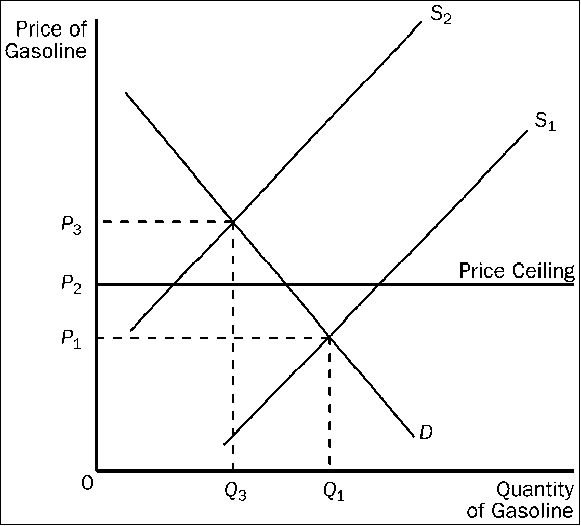If a “conservative” wanted to increase aggregate demand, which of the following would he or she tend to favor?
A. An increase in government spending, because it has a larger multiplier than tax changes.
B. A decrease in transfer payments, because it keeps the public sector small.
C. An increase in transfer payments, because it has a larger multiplier than tax changes.
D. A decrease in taxes, because it makes the public sector smaller.
Answer: D
You might also like to view...
Marginal utility is equal to
A. total utility multiplied by quantity consumed. B. change in total utility multiplied by change in quantity consumed. C. change in total utility divided by change in quantity consumed. D. total utility divided by quantity consumed.
Figure 4-19

Refer to . When the price ceiling applies in this market and the supply curve for gasoline shifts from S1 to S2,
a.
the price will increase to P3.
b.
a surplus will occur at the new market price of P2.
c.
the market price will stay at P1 due to the price ceiling.
d.
a shortage will occur at the price ceiling of P2.
For Adrian, the marginal utility of the 5th energy drink in a day is positive and the marginal utility of the 6th energy drink in a day is zero. This
A. implies that at a zero price Adrian's demand curve will intersect the quantity axis at 6. B. implies that Adrian's demand curve for energy drinks per day will become upward sloping at 6 energy drinks per day. C. is impossible because each additional unit of consumption of any good must provide positive marginal utility. D. implies that Adrian maximizes utility by consuming 5 energy drinks per day.
With the additional leakages of imports and taxes in additional to savings in a public, open economy, how is the economy still able to reach equilibrium?
What will be an ideal response?